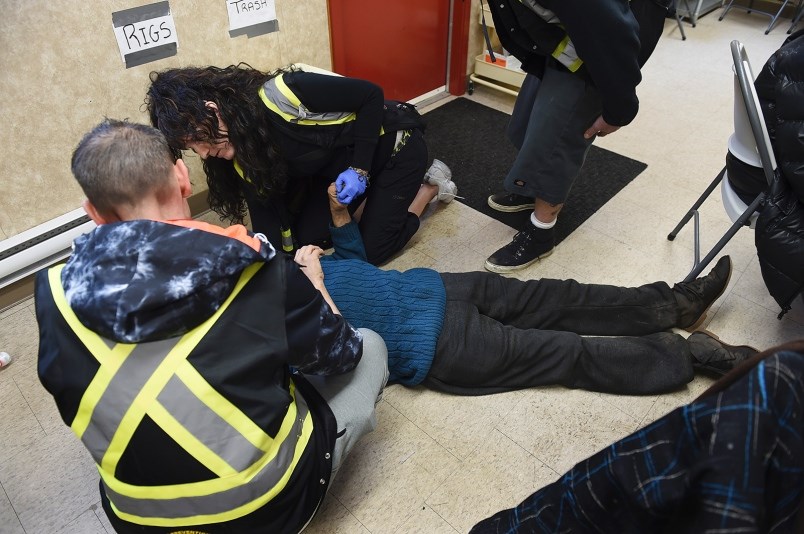B.C. has recorded its 11th straight month in which more than 100 people died from illicit drug overdoses, the B.C. Coroners Service said March 24.
It’s the highest February figure in the last 11 years, eclipsing the 2017 figure of 124 deaths.
Moreover, 2021 is having the worst year so far for fatalities in overdose health crisis since 2011.
The service noted 155 suspected illicit drug toxicity deaths in February, up from 2020’s 75 but an 11% decrease from January’s 174 fatality rate.
The figure is an increase of 107% over those recorded in February 2020. With an average of 5.5 lives lost daily, February 2021 is the second consecutive month in which the average number of daily deaths was above 5.
Last year, the province saw an average 4.7 deaths per day with a total of 1,724 deaths from overdoses for the year.
"The number of deaths due to toxic illicit drugs in February highlights the ongoing critical risk to public health and safety from the illicit drug market," chief coroner Lisa Lapointe said. “The continued tragic and unprecedented rate of death in B.C. highlights the urgent need for a multi-faceted, evidence-based and accessible system of care for those experiencing problematic substance use."
Lapointe said the situation continues to highlight the “alarming increase” in illicit drug supply toxicity in B.C. Some 329 illicit drug toxicity deaths were reported in 2021’s first two months.
“The risk of serious harm or death is very real for anyone using a substance purchased from the illicit market,” the chief coroner said. “Decisive action is urgently needed to ensure an accessible, regulated safe supply and to provide people with the supervised consumption, treatment and recovery services they need."
She noted a trend in deaths among older drug users with 15% of lives lost in 2021 among people 60 years of age and older; 40% were over age 50.
The service said increased variability and toxicity in the drug supply continues to contribute significantly to suspected drug deaths. Carfentanil, a more lethal analogue of fentanyl, was detected in 18 of the 155 deaths (12%), an increase from the January total of 14, the largest monthly figure recorded since April 2019.
Minister of Mental Health and Addictions Sheila Malcolmson said overdose numbers had been decreasing prior to the pandemic.
“According to the BC Centre for Disease Control, our collective efforts to add more supervised consumption services, increased access to naloxone and treatment options made a difference and saved lives. We brought deaths down before and we'll do it again,” she said.
"We know people are hurting now, and we must do more to stop this terrible surge in overdose deaths. Stigma and criminalization are driving people to use alone, and the pandemic is pushing people further into isolation,” Malcolmson said. “The illicit drug supply chain is dramatically more toxic and, tragically, more lethal. The effects of two public health emergencies have taken an immense toll.”
She said the provincial government is “committed to supporting and separating people from the poisoned drug supply.”
That work, she said, would include adding more treatment and recovery options and more services and supports for communities throughout B.C., and would involve working with the federal government to move forward on decriminalization.
“We are going to continue building the culturally safe, evidence-based system of mental health and addictions care people deserve,” Malcolmson said.
Current overdose crisis data for 2021 shows:
• B.C.'s total overall death rate is 38 deaths per 100,000 individuals;
• 81% of people who died were male;
• Municipalities experiencing the highest number of illicit drug toxicity deaths in 2021 are Vancouver, Surrey and Victoria;
• The highest numbers of illicit drug toxicity deaths were in Fraser and Vancouver Coastal Health Authorities (116 and 90 deaths, respectively), making up 63% of all such deaths during this period;
• By health authority in 2021, the highest death rates were in Northern Health (58 deaths per 100,000 individuals) and Vancouver Coastal Health (44 per 100,000 individuals), and;
• By health service delivery area in 2021, the highest death rates were in northeast, Vancouver, northwest, northern Interior and Thompson Cariboo.
@Jhainswo




